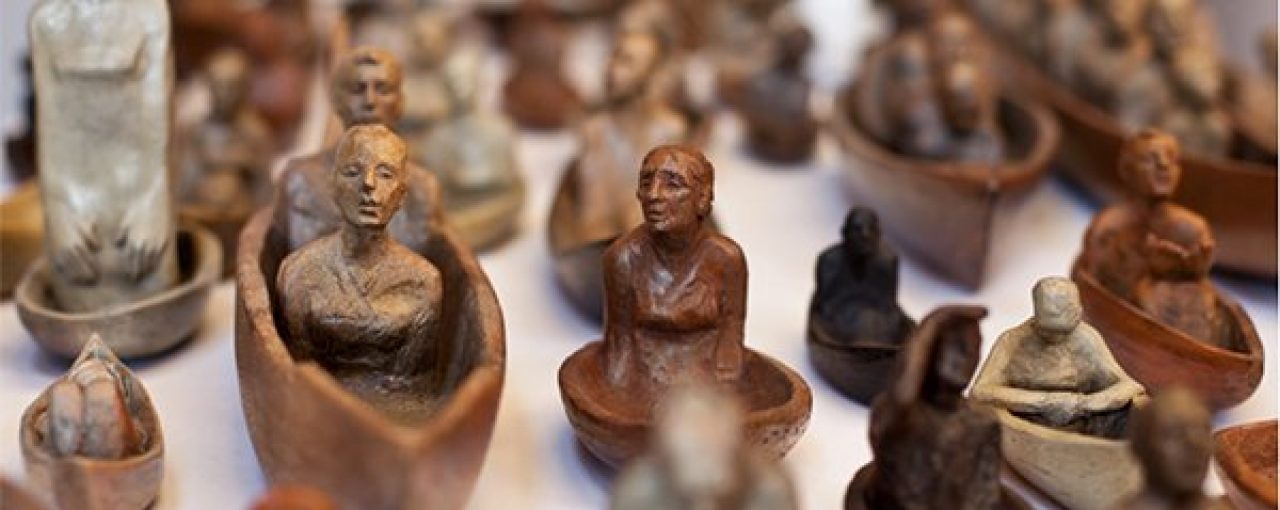Storytelling with Sculpture
Interview by Jennifer Nelson, WTP Feature Writer
Susan Clinard is a prolific artist known for work that often expresses human struggles, such as mothers protecting children and the strong helping out the weak. Now living in Connecticut, she began her sculpture career over twenty years ago. She works in wood, clay, bronze, stone, and mixed media. Clinard has taught in some of America’s finest art institutions, including the School of the Art Institute of Chicago. She has been awarded substantial private and public commissions. Since 2012, she has been the artist-in-residence for the Eli Whitney Museum in Hamden, Connecticut. She has been exhibiting extensively over the last fifteen years. She graduated from the University of Michigan with a degree in sculpture and cultural anthropology.
Nelson: As the artist-in-residence for the Eli Whitney Museum, your studio is a two-hundred-year-old, renovated barn. What is it like working in that type of building, and have you found any old artifacts there to use in your artwork?
Clinard: Without a doubt, it’s special. There is a history and story to every building, every living space. I don’t need to know exactly what the barn was used for throughout its two-hundred-year history to feel its energy.
The original stonewall of the barn extends the full length of my studio on one side; it’s beautiful…living. It keeps me cool in the summer and constantly reminds me of the local landscape from which the stone was quarried.
In the main part of the barn, there are several rooms where objects have been pushed aside throughout the years by its many inhabitants. Specifically, the objects reflect the brilliant mind of the Eli Whitney Museum’s director Bill Brown, who has been collecting oddities, gears, cranks, springs…you name it, it’s likely there. I have been the fortunate recipient of some of these lovely objects, which carry a history with them as well. I like to imagine what that history might be and then in my work incorporate some of the sensation I get from this exploration.
Nelson: You tell stories through your artwork as in the Meditation Boat series and “Six: Sandy Hook Memorial.” What inspires you to tell these specific stories?
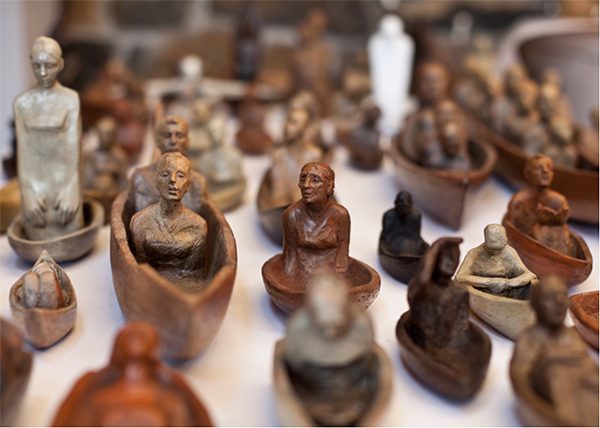
Clinard: Artists’ work often reflects the times in which we live…all of it, the struggles, pain, growth, and subtle beauty. The Meditation Boat series started slowly with a faint flicker…a desire to find a small talisman to hold in my hand that reminds us of this journey we are on. They are often solidarity figures sitting in small boats/vessels, the people wearing various expressions. As this series was building, the Sandy Hook shooting occurred in a town very close to mine whose little victims where nearly the same age as my children. It shut me down for a while. But my hands moved quicker and with purpose after this tragedy and the meditation boats began to have a clarity and direction in their meaning. I made several small vessels with a parent kissing or holding a child and sent them to a few families who lost their little ones that horrible day. The response was cathartic and powerful. Since then, I’ve made over five hundred. They are all over the world, including the former White House. For each person, they mean something different.
“Six: Sandy Hook Memorial” was made as a tribute to the teachers and staff who were killed that day. As an educator and mother, I can only imagine the thoughts and practical impulse to help protect the children. These six amazing women stand tall, hands locked, forming a circle—a protective wall. Their faces are raised high with expressions of strength and beauty, their color luminous.
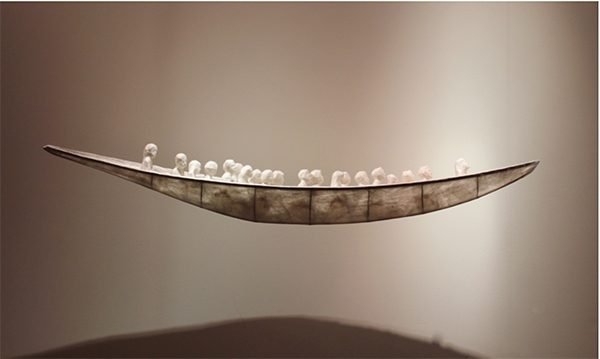
Nelson: Your commissioned work for the city of Bridgeport includes bronze statues of Lewis Howard Latimer, the African American inventor who helped patent the light bulb and telephone, and James O’Rourke, the professional baseball player. How does the actual process of realizing these large projects compare with that of your other works?
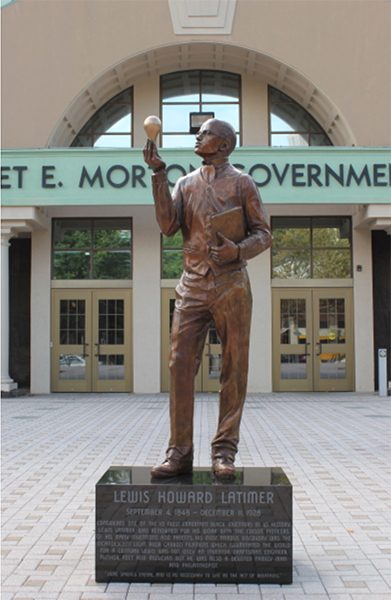
Clinard: I feel very fortunate with each commission I have received over the years. It helps me financially by taking the burden off paying my studio bills and the temptation off from making art that sells verses art that I want to make. This is a practical part of eking out a living as an artist, which can be tricky at times. So far, the commissions I have received have not compromised my artwork or personal values.
Nelson: How did you arrive at the sculptural and mixed media as artist—working in such a variety, from wood, wire, clay, bronze, to stone?
Clinard: I’m always searching. Always trying to find new ways to express our stories. From this desire, I reach out and grab whatever is in front of me. I love how an old piece of wood can offer a completely different sensation than when I bend a piece of wire. It all makes total sense to me. I don’t find it scattered or unfocused; on the contrary, I find working in different media liberating. I’ve been chipping away at this art making for over twenty-six years now and, believe it or not, I still feel wonder in my studio nearly every day. All of my work is connected.
I skip around from one form of expression and material to the next. One day, I feel the urge to work with paper…it’s quiet, soft. I sit down at a table. The next week, I put my construction work suit on and grab my chainsaw. Ahh, carving is wonderful! I see the form slowing emerging from the block of wood like a gift being slowly unwrapped.
Nelson: How do these varied mediums help you explore your themes—do you begin first with a concept or does your choice of medium inform your work? For instance, in the sculpture “Finding Her Balance,” you incorporate not only the found of driftwood, but photographs, tools, weavings, and industrial wood patterns.
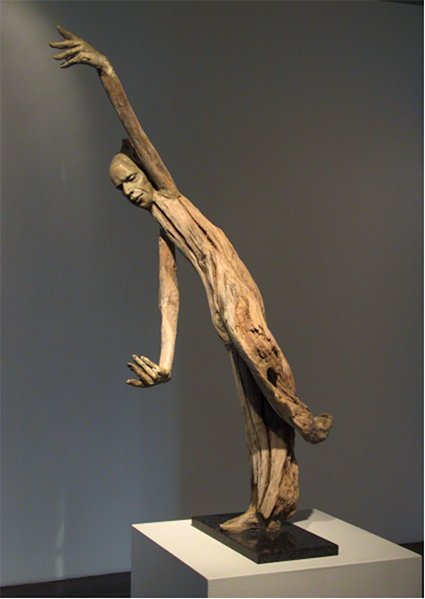
Clinard: The series I use these found objects in most are my box series where there are small compartments/spaces where I can express a different part of a story, anxiety, or emotion. How these found objects juxtapose one another is important as well: the wool ball, cloud-like, soft and inviting pressed up against a sharp metal object, which feels cold and painful. Sure, as the artist, I am putting meaning to these objects; they make me feel a certain way or help me illustrate a sensation. I love how the viewer finds meaning in it for himself…this is art after all.
See Susan Clinard’s sculpture in WTP Vol. VI #3.
Copyright 2018 Woven Tale Press LLC. All Rights Reserved.

